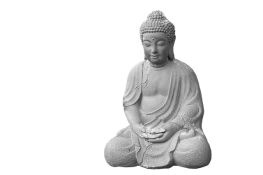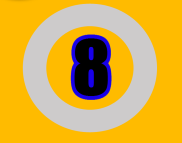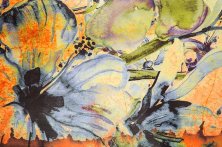Reflections on Creative Purposes
In my book Fighting to Win I place emphasis on the Japanese maxim Mokuteki hon’I, which means “Focus on your purpose.” They are a few simple words that can have a major positive effect, changing the whole course of an existence. To focus on your purpose as this post asks you to  focus on a system to improve your creative performance is to be aware of what you are trying to accomplish–with your life, and in this year, this day, this moment. When you acquire the habit of saying to yourself often in your daily life–morning, noon, and night–“Focus on your purpose,” those words become a hypnotic motto that stirs your muscles and mind to action. Then your life takes on a quality that is now becoming rare even among gifted creators–vital intensity that facilitates the production of works that can be pointed to and admired. That single goal–producing works as a result of talent combined with discipline–is more powerful than all other creative goals.
focus on a system to improve your creative performance is to be aware of what you are trying to accomplish–with your life, and in this year, this day, this moment. When you acquire the habit of saying to yourself often in your daily life–morning, noon, and night–“Focus on your purpose,” those words become a hypnotic motto that stirs your muscles and mind to action. Then your life takes on a quality that is now becoming rare even among gifted creators–vital intensity that facilitates the production of works that can be pointed to and admired. That single goal–producing works as a result of talent combined with discipline–is more powerful than all other creative goals.
I have looked very seriously into what brings success to people in the arts, the sense that the person is functioning in a creative field at as high a level of performance as is possible for him or her. I have come to the conclusion that to reach excellence and satisfaction as a writer, artist, actor, dancer, musician, director, architect, etc., and to excel in any creative field and have a long and perhaps illustrious career, you must pursue, with all the commitment and intelligence you can muster, a small number of certain types of goals.
To excel, to make your mark in a creative field, I realized that you must find your most suitable creative specialty and develop your skills for  that specialty. And you must increase your knowledge of your chosen niche and put yourself on a specific Life Path with the objective always of producing a steady stream of high quality works that will bring you creative happiness. But it was clear to me that much more was involved.
that specialty. And you must increase your knowledge of your chosen niche and put yourself on a specific Life Path with the objective always of producing a steady stream of high quality works that will bring you creative happiness. But it was clear to me that much more was involved.
So I wracked my brain for a way to convey in a clear, interesting, and organized way exactly what over the years I had come to believe about how a “real creator” such as those I admire most came into being. I searched my experiences for a useful model. I’d become interested in Buddhism at seventeen and over the years had done a lot of reading and thinking about it. It was there that I found my model.
As you and I live we encounter suffering. That that suffering is the most basic fact of life is the most important tenet of the religion or philosophy or approach to life known as Buddhism. That is the first of Buddhism’s Four Noble Truths, physical and mental suffering, dukkha.
A Buddhist strives to follow an “Eightfold Path” which is intended to lead to enlightenment and the end of dukkha. Enlightenment and a life  free of suffering are the goal in Buddhism. The Buddhist Eightfold Path consists of eight ideals that when practiced bring an upright and happy life. They are eight prescriptive “rights,” including right association–being careful about associating with good, wholesome, even holy people; right intent–making up your mind as to the one main purpose in life you really want to pursue; right speech–no lying, backbiting, or slander; right thoughts–thinking compassionately, generously, and with goodwill; right conduct–not killing, stealing, or lying; right effort–using your will power and taking action to achieve a good life; right concentration–the use of techniques to enhance concentration and enlightenment. And there is right livelihood–doing what you’re best suited to do in an honest occupation that harms no one.
free of suffering are the goal in Buddhism. The Buddhist Eightfold Path consists of eight ideals that when practiced bring an upright and happy life. They are eight prescriptive “rights,” including right association–being careful about associating with good, wholesome, even holy people; right intent–making up your mind as to the one main purpose in life you really want to pursue; right speech–no lying, backbiting, or slander; right thoughts–thinking compassionately, generously, and with goodwill; right conduct–not killing, stealing, or lying; right effort–using your will power and taking action to achieve a good life; right concentration–the use of techniques to enhance concentration and enlightenment. And there is right livelihood–doing what you’re best suited to do in an honest occupation that harms no one.
Then I thought, “That’s it. That’s what I’m looking for: a clear path that will take a creator to what he/she is seeking and needs strong, continuous encouragement, compassion, and votes of confidence to reach—an eightfold path, but without any religious connotation.”
So now I realize that you and I can realistically speak of The Creator’s Eightfold Path consisting of eight specific components—eight “rights”–that must be present–not one missing–if a person pursuing a career of creative endeavors is to reach high performance and become the real thing.
Introduction to the Components of the Creator’s Eightfold Path
 Success in a creative field (in fact success in any field) is not attributable to one thing alone such as talent or IQ as many people believe, or three or four things. I believe there are eight components. It’s important to understand what the eight components are and the questions they will answer:
Success in a creative field (in fact success in any field) is not attributable to one thing alone such as talent or IQ as many people believe, or three or four things. I believe there are eight components. It’s important to understand what the eight components are and the questions they will answer:
Right Work/Production Program: How can you produce the quality and quantity of works that you hope for?
Right Craft: How will you know if the creative specialty you have chosen to pursue is the most appropriate for you?
Right Identity: What are the personal qualities that will best equip you for the creative craft you have chosen to pursue?
Right Education, Training, and Development: How can you prepare yourself to reach your highest creative performance?
Right Skills: What are the variety of skills you’ll need, and what is your authentic voice and most expressive style?
Right Knowledge: What knowledge will you need if your goal is to excel?
Right Motivation/Drive: Do you have the drive and doggedness you will need if you are to excel?
Right Life Path—are you following the Way of the Creator?
You can reflect on these components and identify the ones in which you are strong and those in which you are weak and need improvement.
In future posts I will discuss further the components of the Creator’s Eightfold Path.
Here is an introduction to one of the components:
Insights about Right Work/Production Program
The most vital factor of successful production is working with a single-minded preoccupation—the focus on the one thing, the work itself–whether for fifteen minutes or many hours–avoiding and getting rid of distractions, and ignoring as much as you realistically can other responsibilities.
It is not enough to possess talents. Talents must be put to work and result in paintings and poems and such. Creators make the structure of  their creative lives by means of the work they do. If they are unable to work or the work is poor quality or is stopped-up and doesn’t go well, they suffer. Regarding the necessity of a creator to sweat and produce paintings, poems, symphonies or buildings, etc., Saul Bellow said, “For the artist, work is the main thing and always comes first.” Brewster Ghiselin said, “It is only as the work is done that the meaning of the creative effort can appear and that the development of the artist…is attained.” Psychologist Howard Gardner writes about high-excelling creative people. He says, “Individuals whose stock in trade is to do things which are novel, are people who’ve got to have a pretty good command of how they work.”
their creative lives by means of the work they do. If they are unable to work or the work is poor quality or is stopped-up and doesn’t go well, they suffer. Regarding the necessity of a creator to sweat and produce paintings, poems, symphonies or buildings, etc., Saul Bellow said, “For the artist, work is the main thing and always comes first.” Brewster Ghiselin said, “It is only as the work is done that the meaning of the creative effort can appear and that the development of the artist…is attained.” Psychologist Howard Gardner writes about high-excelling creative people. He says, “Individuals whose stock in trade is to do things which are novel, are people who’ve got to have a pretty good command of how they work.”
The Value of Structure
Successful creators almost always structure their work time and environment carefully. One of the first things a creator does is to clear a work space. A perfect work place and good production routines and rituals are to be treasured. By simply being there ready to work repetitively the same time day after day, the power of good habits goes into effect.
 There isn’t one universal work/production program that suits all creators. A production program won’t work if it’s imposed. Each creator’s program will have to be idiosyncratic–custom-designed by yourself for yourself. To find the ways and means to improve the quantity and quality of your production, you should experiment and try out different approaches until the best work/production program suited to yourself is found.
There isn’t one universal work/production program that suits all creators. A production program won’t work if it’s imposed. Each creator’s program will have to be idiosyncratic–custom-designed by yourself for yourself. To find the ways and means to improve the quantity and quality of your production, you should experiment and try out different approaches until the best work/production program suited to yourself is found.
A well thought out Right Work/ Production Program should be designed to enable you to:
- Focus on your work for desired periods of time–minutes or hours, weeks or months
- Abandon what isn’t working, putting aside futile problems that will lead to dead-ends and frustration
- Free yourself from distractions and time-wasters
- Remain efficient and productive in the midst of obstacles and setbacks in either your creative or personal life
- Maintain and not fully deplete your energy and stamina
- Achieve a desirable level of output
Be Ready to Work
 For high quality uninterrupted work to happen, not all, but most creators need isolation and solitude. “The concentration of writing requires silence. For me, large blocks of silence. It’s like hearing a faint Morse code…a faint signal is being given and I need quiet to pick it up” (Philip Roth). Some creators prefer noisy environments. But even the feeling that you might be interrupted interferes with creative thought.
For high quality uninterrupted work to happen, not all, but most creators need isolation and solitude. “The concentration of writing requires silence. For me, large blocks of silence. It’s like hearing a faint Morse code…a faint signal is being given and I need quiet to pick it up” (Philip Roth). Some creators prefer noisy environments. But even the feeling that you might be interrupted interferes with creative thought.
The Value of Volume.
The big names in an art are often the artists who have produced the most works. They have a genius for productivity. It is a good idea to have  production goals continuously in mind. Production ebbs and flows. Some days work comes out of you in torrents. You’re in overdrive. But other days–nothing. But one way or another, good mood or bad mood, you must apply yourself, overcome inertia, and get work out.
production goals continuously in mind. Production ebbs and flows. Some days work comes out of you in torrents. You’re in overdrive. But other days–nothing. But one way or another, good mood or bad mood, you must apply yourself, overcome inertia, and get work out.
In Art & Fear, authors David Bayles and Ted Orland talk about the importance of a creator’s need for production. They write about what happens in a ceramics class that I’ve found also happens in a class of writers. You could take two groups of writers in a class. Those on the left side of the room would be graded solely on the quantity of the work they produced. Those on the right side would be graded only on the work’s quality. On the final day of the class the teacher would measure the amount of work of the quantity group—500 pages an A, 350 pages a B, and so forth. Those the teacher would grade on quality would have to produce only one story, but it would have to be perfect to justify an A.
 A curious thing would happen. The quantity group would also produce the highest quality work. The quantity group would churn out streams of work and learn from their many mistakes and develop wide assortment of skills. But the quality group would get caught up the elusive concept of perfection and grandiose dreams and would become paralyzed. Some creators produce 10, 15, or 25 times more works than other creators. Those who produce the most works usually rise higher, do better work, and find a greater sense of accomplishment.
A curious thing would happen. The quantity group would also produce the highest quality work. The quantity group would churn out streams of work and learn from their many mistakes and develop wide assortment of skills. But the quality group would get caught up the elusive concept of perfection and grandiose dreams and would become paralyzed. Some creators produce 10, 15, or 25 times more works than other creators. Those who produce the most works usually rise higher, do better work, and find a greater sense of accomplishment.
Working Regularly Is Almost Mandatory
 If you neglect an activity for just two days you’ll function much less effectively when you resume work. In writing and painting, as in everything else, inactivity leads to the atrophy of abilities. Your level of motivation affects your willingness to work. The quantity of your production is in direct proportion to the intensity of your motivation and drive. Creators with drive are able to persist steadily without interruption whereas poorly motivated creators will interrupt their work more often and not engage in it for long periods. Samuel Johnson said, “If you want to be a writer, write all the time.”
If you neglect an activity for just two days you’ll function much less effectively when you resume work. In writing and painting, as in everything else, inactivity leads to the atrophy of abilities. Your level of motivation affects your willingness to work. The quantity of your production is in direct proportion to the intensity of your motivation and drive. Creators with drive are able to persist steadily without interruption whereas poorly motivated creators will interrupt their work more often and not engage in it for long periods. Samuel Johnson said, “If you want to be a writer, write all the time.”
© 2022 David J. Rogers
For my interview from the international teleconference with Ben Dean about Fighting to Win, click the following link:
Order Fighting to Win: Samurai Techniques for Your Work and Life eBook by David J. Rogers
or
Order Waging Business Warfare: Lessons From the Military Masters in Achieving Competitive Superiority
or


 People in every walk of life and in every hemisphere on earth–in cities, on deserts, in towns and villages–long to create something. My nine year old grandson is a talented artist and cellist studying architecture. His six year old sister takes dance and will begin taking piano lessons in the fall. Their forty two year old father was an excellent cellist in his youth and was inspired by the performance of a famous cellist to return to it last year. My wife, is a former cellist, and has taken up water colors and has returned to the piano. I write every day. I have for many years, and when I am not writing I am thinking about it and planning what I will write. We are representative people no different from millions of others with whom we share the globe because the current era is an Age of Heightened Creativity. Little children and women and men of all ages are bent on having creative experiences. They will not let their creative instincts be stifled.
People in every walk of life and in every hemisphere on earth–in cities, on deserts, in towns and villages–long to create something. My nine year old grandson is a talented artist and cellist studying architecture. His six year old sister takes dance and will begin taking piano lessons in the fall. Their forty two year old father was an excellent cellist in his youth and was inspired by the performance of a famous cellist to return to it last year. My wife, is a former cellist, and has taken up water colors and has returned to the piano. I write every day. I have for many years, and when I am not writing I am thinking about it and planning what I will write. We are representative people no different from millions of others with whom we share the globe because the current era is an Age of Heightened Creativity. Little children and women and men of all ages are bent on having creative experiences. They will not let their creative instincts be stifled. It became a permanent part of your entire being–an idea, a theme, or an image that became a guiding force in your life. You may not be conscious of it, but it starts you out in a creative direction, and gives you a sense of moving steadily in that direction, of heading straight toward something concrete and specific. Making a living in art is difficult and so most artists must find financial security other than in art. But whatever your occupation if you are to be an artist you will define yourself first as an artist, an accountant, HR manger, or English teacher second.
It became a permanent part of your entire being–an idea, a theme, or an image that became a guiding force in your life. You may not be conscious of it, but it starts you out in a creative direction, and gives you a sense of moving steadily in that direction, of heading straight toward something concrete and specific. Making a living in art is difficult and so most artists must find financial security other than in art. But whatever your occupation if you are to be an artist you will define yourself first as an artist, an accountant, HR manger, or English teacher second. Noted composers and performing artists in musical fields–so sensitive to sound and tone—possess what the Germans call Horlust–“hearing passion.” Writers–particularly poets and lyrical writers–have a word passion (they adore words), and painters adore colors and shapes, often from the cradle.
Noted composers and performing artists in musical fields–so sensitive to sound and tone—possess what the Germans call Horlust–“hearing passion.” Writers–particularly poets and lyrical writers–have a word passion (they adore words), and painters adore colors and shapes, often from the cradle. What is inside the shut door is the artist’s rich inner life from which creative products pour–without stopping if the artists explore themselves more and more deeply. Transformation of what is inside the artist into what is outside is the
What is inside the shut door is the artist’s rich inner life from which creative products pour–without stopping if the artists explore themselves more and more deeply. Transformation of what is inside the artist into what is outside is the  Poet W.H. Auden wrote, “Speaking for myself, the questions which interest me most when reading a poem are two. The first is technical: ‘Here is the verbal contraption. How does it work?’ The second is, in the broadest sense moral. What kind of guy inhabits this poem? What is his notion of the good life or the good place? His notion of the Evil One. What does he conceal from the reader? What does he conceal even from himself?” William James said it is the amount of life in the act of creation which artists feel that makes you value their mind.
Poet W.H. Auden wrote, “Speaking for myself, the questions which interest me most when reading a poem are two. The first is technical: ‘Here is the verbal contraption. How does it work?’ The second is, in the broadest sense moral. What kind of guy inhabits this poem? What is his notion of the good life or the good place? His notion of the Evil One. What does he conceal from the reader? What does he conceal even from himself?” William James said it is the amount of life in the act of creation which artists feel that makes you value their mind. Artists must be people of action because their main goal is production of works over which they think and
Artists must be people of action because their main goal is production of works over which they think and  Children and adults may drop out, but those who turn to art may well be playing the cello or dancing or painting, only getting better and enjoying their art perpetually–all their lives– with fond
Children and adults may drop out, but those who turn to art may well be playing the cello or dancing or painting, only getting better and enjoying their art perpetually–all their lives– with fond